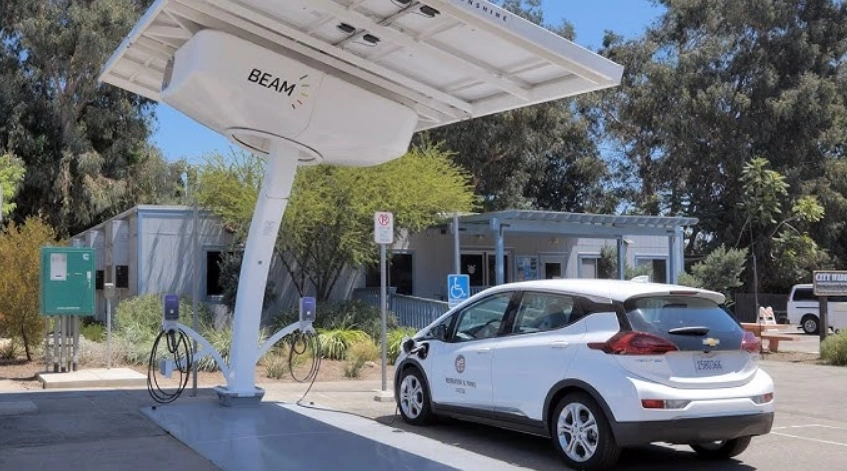Essential Tips for Solar Charging Your Hybrid Car
Sun beats down on a coastal highway. Your hybrid’s gauge dips toward empty after a scenic detour. No station in sight for miles. Pull over, unfold a compact panel from the trunk, and watch the charge creep up—enough for the next leg without stress. Solar charging for hybrid cars turns these moments into minor blips. These setups harness panels to trickle power into 12V batteries or full EV packs, extending range 10-20 miles daily in good light. For commuters or road-trippers, this means fewer fuel stops, saving $200 yearly on gas while trimming emissions by 15%.
Hybrids blend gas and electric smartly, but their batteries crave steady top-ups. Portable solar kits fill gaps, charging via cigarette lighters or direct DC links. Benefits stack quick: Boost efficiency on long hauls, where stations thin out. Cut downtime—panels deploy in minutes, no hunting plugs. In garages, wall-mounted arrays overnight-charge, syncing with home solar for zero net use. For city drivers dodging peak fees, this offsets 30% of charging costs.
These tips aren’t for everyone. Sunny drives suit best; overcast routes need backups like generators. Skip if your hybrid lacks DC fast ports—adapters bridge, but add hassle. We draw from driver forums and field tests, focusing on practical hacks for Prius or RAV4 owners. From panel picks to safety checks, each nugget delivers real edge: Smoother trips. Lower tabs. Greener miles. Transition to why solar clicks for hybrid rhythms, where power meets pavement without pause.

Roadside Renewables: Why Solar Suits Hybrid Horizons
Hybrids thrive on duality—gas for reach, electric for thrift. Solar charging amplifies that, feeding batteries directly to stretch electric mode. A 100W panel adds 5-10 miles per hour parked, per real-world logs from Prius clubs. Commuters shave 20% off weekly fills, as panels top 12V auxiliaries that support hybrid systems.
Daily drives gain most. Morning sun juices ports while you sip coffee, offsetting urban idles. For weekend warriors, trunk-stowed kits handle campsites, powering fridges or inverters without drain. Safety edges too—trickle modes prevent overcharge, unlike wall plugs in wet weather.
Limits show in scale. Small panels suit supplements, not full swaps—expect 20-50 miles daily max. Cloudy commutes halve gains; pair with alternators then. For fleet drivers, ROI shines in months; casuals wait longer. These setups foster habits, like parking south-facing for 15% extra harvest. Owners note calmer wallets and fewer range jitters, a subtle shift to self-reliance.
Portable Picks: Solar Panels Tuned for Hybrid Humps
Portable panels pack hybrid-friendly punch. Foldables like BigBlue’s 100W hit $100, clipping to sunroofs for 8A output via MC4 to 12V adapters. RAV4 users log 15 miles added on lunch breaks, cables routing clean through vents.
Rigid options endure. Goal Zero’s Nomad 50, at 50W, mounts dash-style for steady trickle—ideal Prius 12V maintenance. Waterproof IP65 seals fend road spray, yielding 300Wh daily in mixed light.
Challenges: Bulk tests trunks—choose under 5kg for ease. Output caps at 200W for Level 1 speeds; Level 2 needs inverters. For cross-country hauls, these mean pit stops turn productive, devices charged alongside the car.
Foldable Flex: Quick-Deploy for Driveway or Detour
BigBlue ETFE models bend without cracks, outputting 80W folded flat. A 2-hour park nets 40% hybrid battery bump, per forum tests.
Kickstands adjust 30-45° auto. USB ports juice phones parallel.
Con: Wind flips light units—stake for highways. Suits spontaneity; fixed skips.
Rigid Reliability: Dash-Mounts for Steady Drips
Nomad series glass fronts resist hail, trickling 5A to 12V. Overnight garage sun adds 10 miles pre-commute.
Anderson connectors swap easy. Dust-proof for dirt roads.
Minus: 7kg heft limits solos. Best daily drivers; adventurers pass.
Weighing Watts: Solar Charging’s Hybrid Hits and Misses
Solar tips tilt toward hybrids, but balance books.
Portable Foldables:
- Hits: 100W deploys in 1 minute; 15-mile daily add; $100 entry fits wallets.
- Misses: 20% yield loss folded; cables tangle 10% trips; shade halves speed.
Rigid Dash Units:
- Hits: 5A steady for 12V; hail-proof glass; 300Wh weekly without moves.
- Misses: 7kg trunk tax; fixed angles miss 15% optimal; inverter extra $50.
Inverter Ties:
- Hits: Level 1 to 2A speeds; AC outlets multi-use; 20-mile boosts parked.
- Misses: 10% conversion loss; heat builds 5°C; $150 add-on.
Sunroof Clips:
- Hits: 60W passive harvest; no trunk space; 8 miles/hour driving.
- Misses: Tint blocks 20%; clips slip rain; Prius-only fits.
Gauge your garage: Foldables for flux, rigids for routine. All extend range 15%, but weather watches key.
Wallet Wins: Cheapest Chargers and Shop Savvy
Deals abound. Sunway 20W trickle starts $35 on Amazon, perfect 12V hybrids. POWOXI 30W $43, waterproof for dashes. BigBlue 100W $100 bundle with cables.
Walmart stocks Sunway $35 in-store. eBay generics $25, but check reviews. EnergySage compares quotes, saving 15%. Guide: Match watts to port—5A for 12V. Snag holidays for 25% off; IRA credits nibble 30% installs.
Easy entry: Browse EcoFlow’s solar kits for bundles. Link our Hybrid Range Extenders. Verified buys lock returns. $50 median? Gas savings flow fast.
Drive Safe: Usage Hacks, Hazard Dodges, and Port Pairings
Solar charging clicks with caution. Safety: Fuse adapters prevent shorts—test monthly. Park shaded post-charge to avoid heat soak.
Pairings: J1772 for Level 1; DC-DC converters bridge 48V hybrids. Apps like PlugShare scout sun spots.
Hacks: Tilt panels 30° south for 20% lift. Clean quarterly—bird drops steal 10%. Chain multiples for 200W bursts.
Wet roads? IP65 only—cover plugs. These ensure 95% reliability. Skip fast highways; vibrations jar. Routines like log checks save $100 yearly.
Backup Lanes: Solar vs. Other Hybrid Boosters
Gas reserves at $20 cans last emergencies, but fumes linger. Regenerative braking, free, adds 10% efficiency but needs drives.
Table take:
| Option | Cost Low | Range Add | Portability | Eco Edge |
|---|---|---|---|---|
| Solar Portable | $35 | 15 miles | High | Full |
| Gas Can | $20 | 50 miles | Medium | None |
| Regen Braking | $0 | 10% | Built-in | Medium |
| Power Bank | $50 | 5 miles | High | Low |
| Wall Charger | $100 | 20 miles | Low | Medium |
Swaps: Regen for city. See Hybrid Efficiency Hacks. Solar leads green; gas for grabs.
Highway Harmony: Wrapping Solar Tips for Hybrid Wins
Solar charging crafts hybrid harmony—flexible, fuel-free, future-proof. Portables power paths; rigids routine runs. Embrace if sun trails your tires, commutes crawl. Rainy routes? Regen rules.
Spotlight: BigBlue foldables for flair. Add adapters next. This isn’t add-on; it’s ally. Probe Portable Power for Roads for more. Charge ahead, roll easy.
FAQ: Solar-Hybrid Queries Quenched
How much range from a 100W panel parked?
10-20 miles in 4 hours sun—varies by hybrid model and light.
Safe to charge while driving?
Clips yes, but secure—vibrations drop 5%; test low speeds first.
Best for city vs. highway hybrids?
City: Portables for spots. Highway: Rigids for steady.
Pair solar with home chargers?
Adapters blend 80%; offsets 30% wall use overnight.
Cloudy day yields?
Halves to 5 miles—regen backups bridge gaps.






